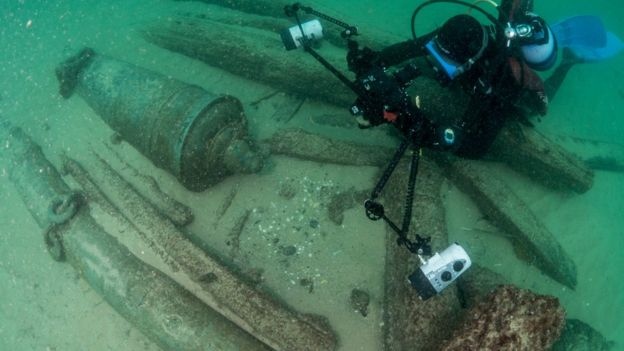
According to sources spices, ceramics and cannons engraved with Portugal's coat of arms all lie around the wreck, found near Cascais, close to the capital Lisbon. Meanwhile the team believes the ship was returning from India when it sank sometime between 1575 and 1625 and hence this was at the height of Portugal's spice trade with Asia. Project director Jorge Freire told news agency that it is situated at a depth of 12m (40ft) the wreck was very well preserved.
Furthermore Chinese porcelain from the late 16th and early 17th centuries was also among the wreck, as were bronze artillery pieces and cowry shells a currency used in the slave trade. As per report Cascais municipal council said the ship was found at the start of September while dredging the mouth of the Tagus River, which runs past the resort town through Lisbon. Moreover Mayor Carlos Carreiras told the Guardian newspaper it was an "extraordinary discovery", which will reinforce their "collective identity and shared values".

Accordingly the find is part of a 10 year
archaeological project supported by the town of Cascais, the Portuguese
government and navy, and Nova University in Lisbon and further the Minister of
Culture, Luis Mendes, said the mouth of the Tagus River was considered a "hotspot"
for wrecks. "From a heritage perspective, this is the discovery of the
decade," he said, calling it "the most important find of all
time" for the country.





